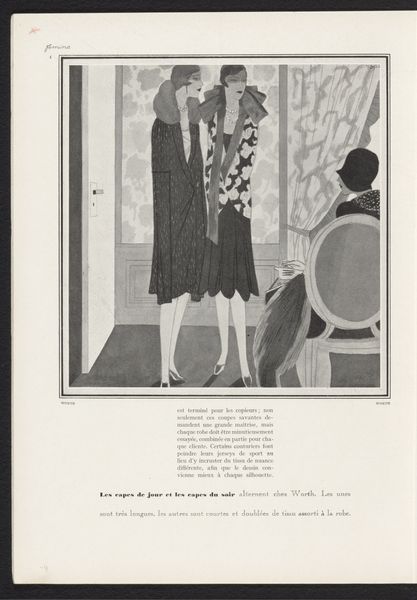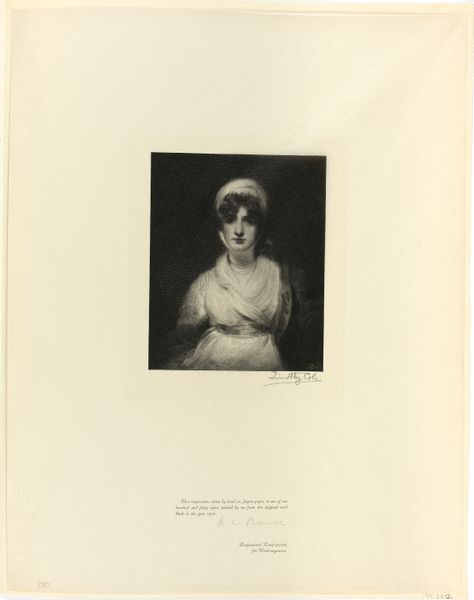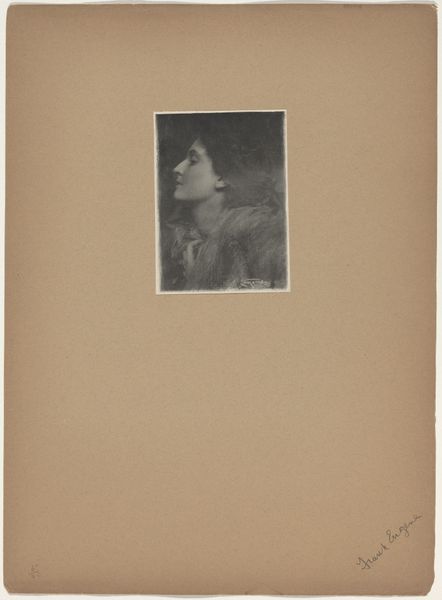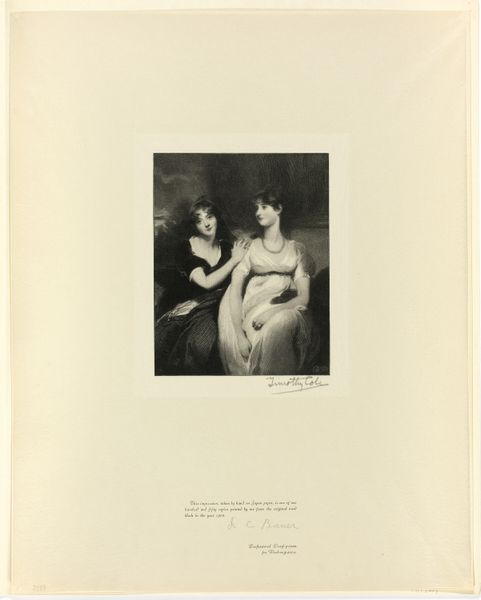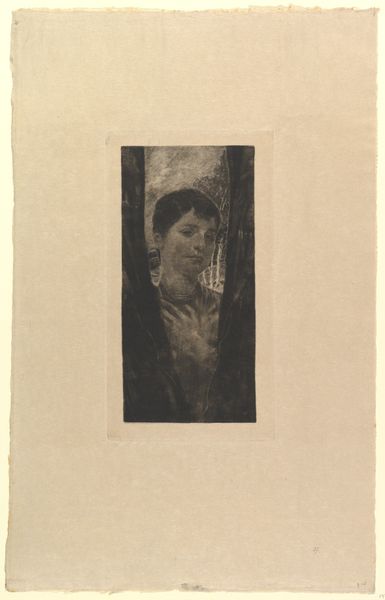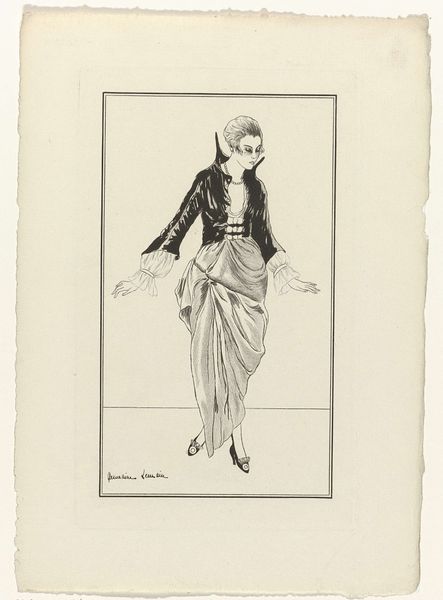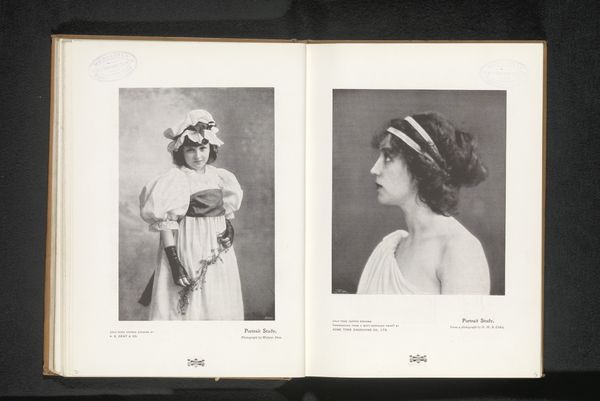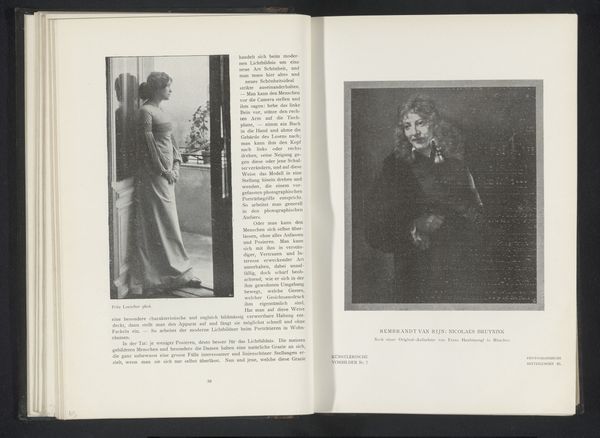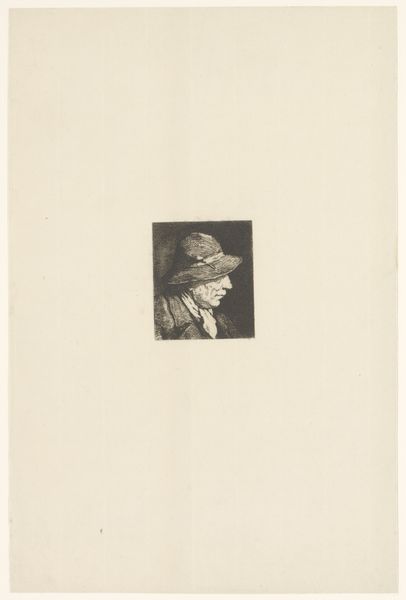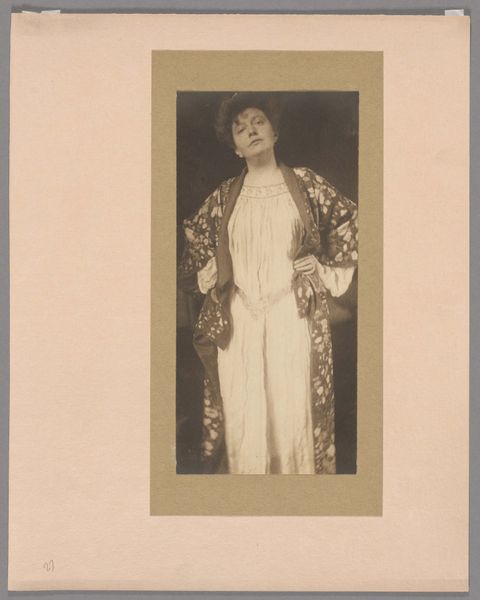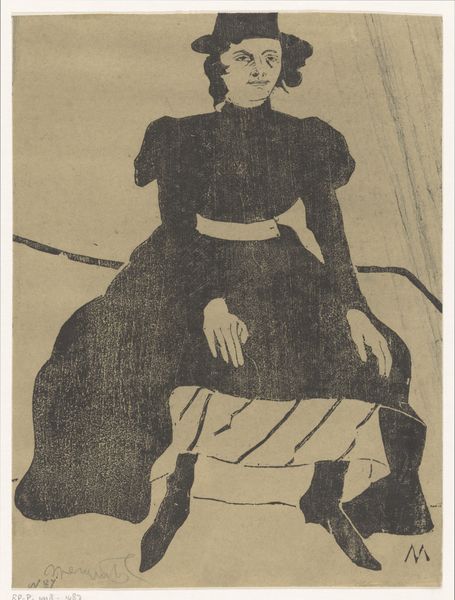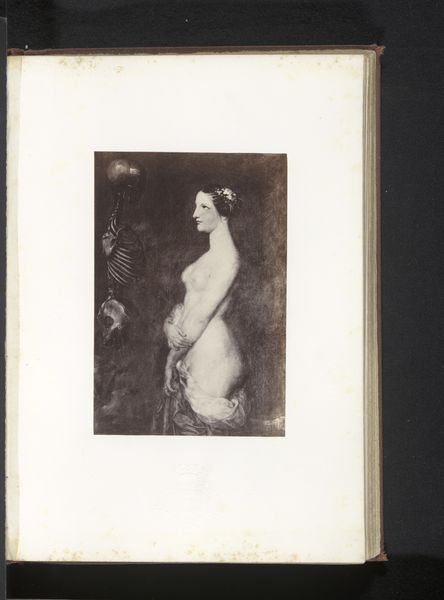
drawing, ink
#
portrait
#
art-deco
#
drawing
#
ink
Dimensions: height 352 mm, width 224 mm
Copyright: Rijks Museum: Open Domain
Curator: At first glance, these ink drawings feel so muted, almost melancholic, don't they? Editor: They do have a certain subdued elegance. What are we looking at specifically? Curator: This page comes from the French fashion magazine *Femina*, specifically the March 1928 issue. It features two hat designs by Maria Guy, a very prominent milliner of the time. Editor: So, a period piece reflecting a specific fashion moment. I’m particularly drawn to the anchor motif on the upper hat. It lends an almost nautical, yet restrained feel. Do you get that too? Curator: Absolutely! It's interesting how the anchor, typically a symbol of stability, is presented here in a context of ephemeral fashion. There's an underlying tension between timelessness and fleeting trends. Editor: That tension is very indicative of the Art Deco era generally, grappling between tradition and modernity, luxury and industrial production. It really speaks to a society in flux after the First World War. These hats weren't just about function, but communicating a specific identity. Curator: Precisely. And if you consider the geometric patterns and stylized depiction of the faces, you see those themes playing out everywhere here, in terms of the social coding that was being established and reestablished through art. Editor: Agreed. I'm curious, does Maria Guy’s particular artistic vision reflect or subvert any dominant gender norms of that time? What were the expectations surrounding fashion like during the late 1920s? Curator: In many ways, these designs were subversive in the sense that they embrace a sleek, almost androgynous silhouette that diverges sharply from earlier styles. Editor: In short, these weren’t your grandma’s bonnets. They reflect a modern, assertive femininity. Even these choices—rendering this with the barest essential lines, black ink on plain paper—suggest a move towards function over embellishment. Curator: I hadn’t thought of the lack of color as an argument, but now you mention it, I am reminded of the sheer ubiquity of color in media now versus then, which might be something for contemporary readers to consider more closely, here and elsewhere. Thank you for your insights, truly! Editor: You as well, both as an artist, and fellow interpreter of the ever-fascinating dialogue between history, art, and the meaning of fashion.
Comments
No comments
Be the first to comment and join the conversation on the ultimate creative platform.
